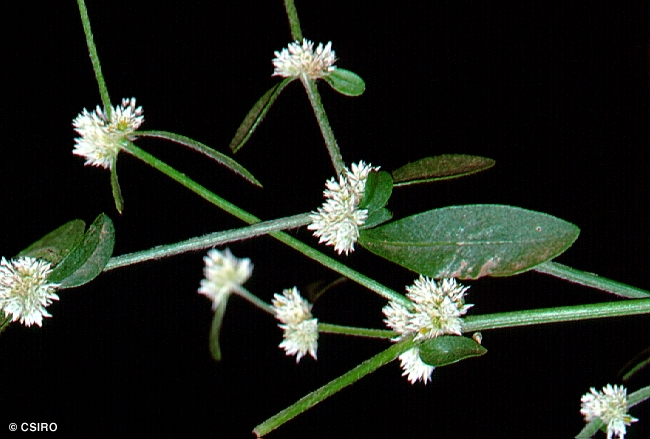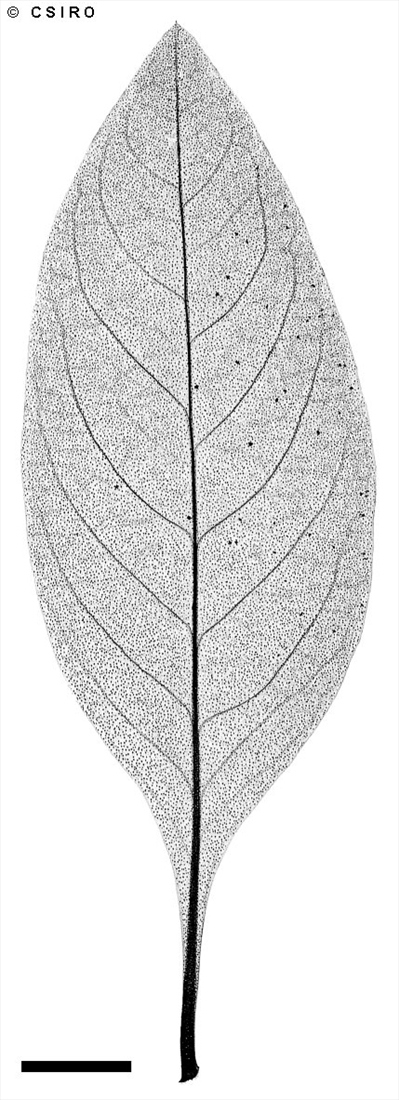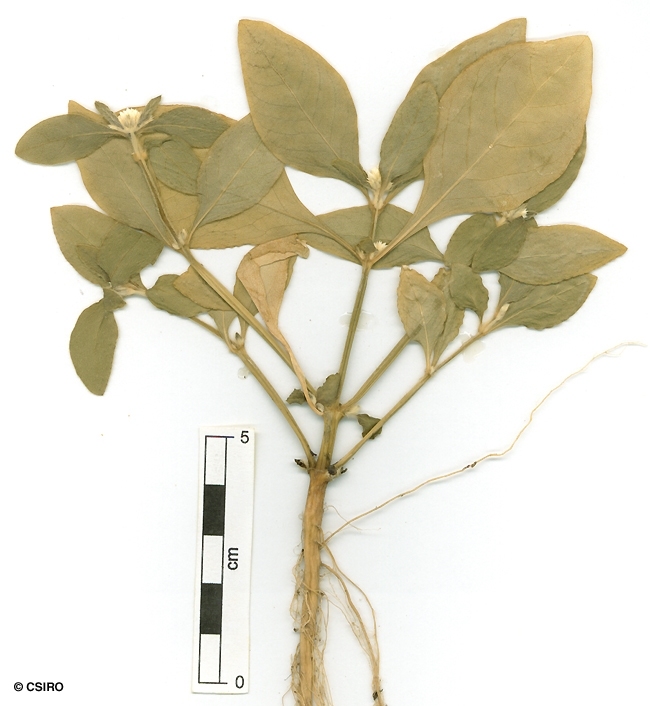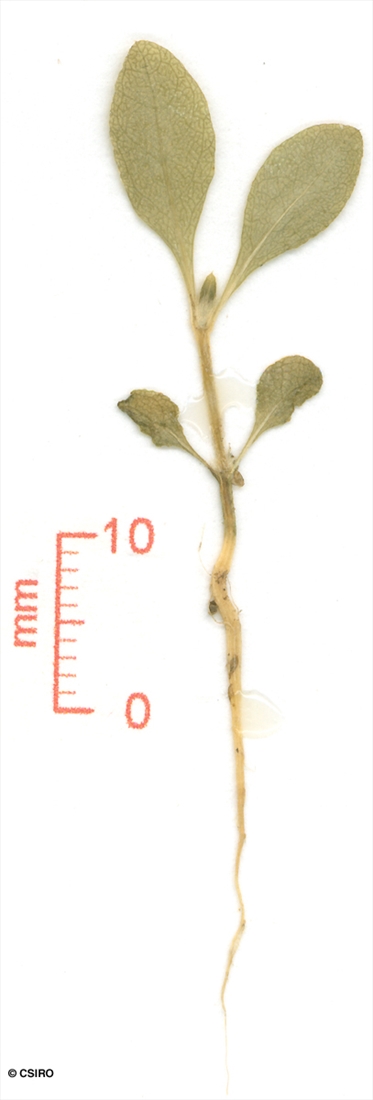Australian Tropical Rainforest Plants - Online edition
Alternanthera ficoidea (L.) P.Beauv.




Palisot de Beauvois, A.M.F.J. (1818) Flore d'Oware et de Benin en Afrique 2(17): 66.
Joyweed
Usually flowers and fruits as a herb but occasionally reaches a height of 1 m.
Flowers in axillary sessile spikes or clusters. Perianth segments about 3-5 mm long, clothed in pale hairs. Staminal filaments fused towards the base, anthers about 1-2 mm long, free filaments about 1.5-2 mm long, staminodes alternating with the stamens. Staminodes about 2.5-3 mm long, apices toothed or lobed. Ovary about 1 mm long, enclosed in the staminal tube. Style short, about 0.5 mm long.
Infructescence very much like the inflorescence, i.e. consisting of tightly packed bracts interspersed with pale hairs. Individual fruits slightly more than 1 mm long, enclosed in the persistent perianth segments and bracts. Seeds discoid, about 1 mm diam., testa brown. Embryo U-shaped, just inside the periphery of the seed and surrounding the central endosperm.
Cotyledons about 6 x 5 mm. Taproot thick, carrot-like (Daucus carota). At the tenth leaf stage: leaves sparsely clothed in hairs on the underside along the midrib. Stems with two longitudinal lines of hairs on opposite sides of the stem. Seed germination time 81 days.
An introduced species originally from Brazil, now naturalised in CYP, NEQ, CEQ and south to south-eastern Queensland. Altitudinal range in CYP and NEQ not known, but more frequent at lower altitudes. Usually grows in disturbed areas of open forest but also found along roads through rain forest. Suspected of being dispersed as a contaminant in baled hay.
Gomphrena ficoidea L., Species Plantarum 1: 225(1753). Alternanthera bettzichiana (Regel) G.Nicholson, (1884), The Illustrated Dictionary of Gardening 1: 59(1884), Type: [Misapplied name].





